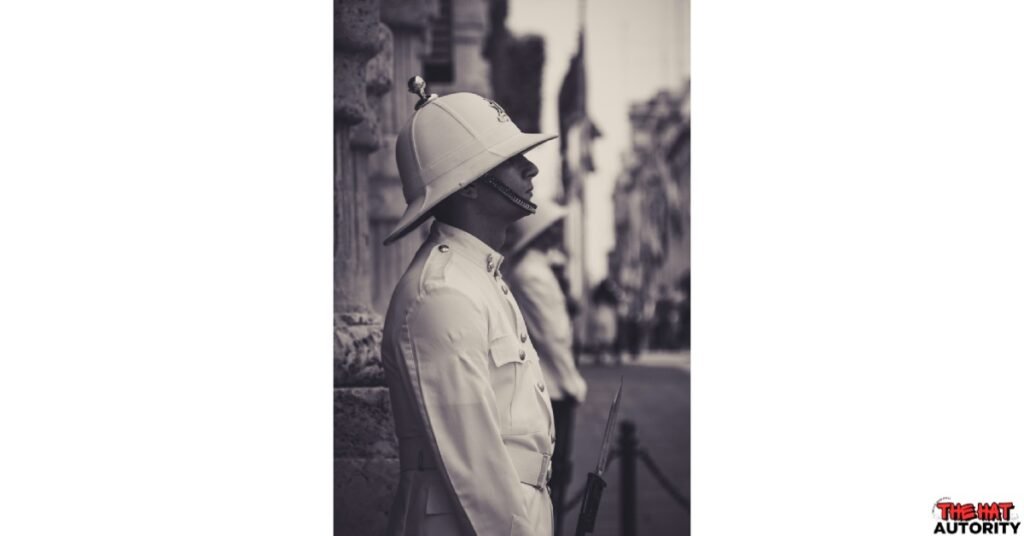Over the years, clothing has spoken louder than words—especially when it comes to headwear. What does wearing a white cap mean? It’s a question rooted in history, culture, and symbolism. Whether you’ve spotted someone in a pristine white cap at a religious gathering, a graduation ceremony, or just strolling down the street, there’s often more to it than meets the eye. From spiritual purity to cultural identity, the white cap carries a depth of meaning that spans continents and generations. Let’s dive into its fascinating story and uncover the significance behind this timeless accessory.
Historical Origins of White Caps and Their Symbolism
White caps have a history that stretches back centuries, weaving through cultural rituals, religious practices, and social customs. In ancient civilizations, white head coverings were often seen as symbols of purity and reverence. They adorned the heads of priests, scholars, and leaders, marking their elevated status within society.
In medieval Europe, white caps were associated with modesty and humility, particularly for women. They were worn as part of traditional attire, representing virtue and cleanliness. Meanwhile, in other parts of the world, such as Asia and Africa, white caps played ceremonial roles, signifying honor and respect during sacred events.
Over time, the symbolism evolved, but the core idea of white caps as markers of status and meaning endured. Whether worn by spiritual leaders or ordinary people, these caps carried messages of devotion, authority, and tradition that continue to resonate today.
Religious and Spiritual Meanings Behind White Caps
Religion has long shaped the way people view clothing, and white caps are no exception. In Christianity, white symbolizes purity, making it a common color for baptismal garments and clerical headwear. Catholic priests, for instance, often don white caps during ceremonies to emphasize holiness and divine connection.
Islam also incorporates white caps, known as “taqiyahs,” which symbolize faith and devotion. Men often wear them during prayers to reflect humility and respect before God. Similarly, in Hindu traditions, white head coverings are used in ceremonies to honor deities and signify spiritual awakening.
Across different faiths, white caps are seen as visual reminders of morality and discipline. They create a sense of unity among followers, reinforcing shared beliefs and values. Whether worn daily or for special occasions, these caps embody deeper meanings rooted in faith and tradition.
Cultural Traditions and Ceremonies Involving White Caps
White caps hold cultural significance beyond religion. In many societies, they are tied to rites of passage and important life events. For example, in weddings, white caps symbolize new beginnings and purity, making them a popular choice for brides or ceremonial leaders.
Graduation ceremonies also feature white caps, particularly in academic traditions where they mark achievement and the transition into a new phase of life. Similarly, white caps appear in rituals honoring ancestors, serving as symbols of respect and continuity between generations.
Beyond formal events, white caps have even been used in folklore and storytelling, often representing wisdom, transformation, or mystery. These cultural layers add richness to their meaning, blending heritage with modern interpretations.
The Role of White Caps in Modern Fashion and Style
White caps have transcended their historical and cultural roots to become modern fashion statements. Today, they are often associated with simplicity, elegance, and versatility. Whether paired with casual streetwear or formal outfits, white caps have secured their place as timeless accessories.
In recent years, celebrities and influencers have embraced white caps as symbols of minimalism and chic style. Their clean design complements a wide range of looks, from sporty athleisure to sophisticated ensembles. The neutral tone also allows them to stand out without overpowering an outfit, making them a go-to choice for fashion enthusiasts.

Beyond aesthetics, white caps are also seen as markers of professionalism. Chefs, nurses, and service workers often wear them as part of their uniforms, symbolizing cleanliness and precision. This dual role—fashionable yet functional—reinforces their lasting relevance in contemporary wardrobes.
White Caps in Professional and Academic Settings
In professional environments, white caps often serve as symbols of authority, expertise, and discipline. Nurses, for example, wore white caps for decades as a badge of professionalism and care. Though less common today, the iconic image of a nurse in a white cap remains a symbol of compassion and trust.

Similarly, chefs wear tall white caps, known as “toques,” which denote rank and skill in the culinary world. The height of the cap traditionally reflected a chef’s experience, with taller toques signifying greater mastery. This visual hierarchy continues to influence culinary uniforms worldwide.
In academic settings, white caps often appear during graduation ceremonies, symbolizing academic achievement and scholarly excellence. Whether in universities or vocational programs, these caps mark moments of success and transition, carrying forward traditions of honor and recognition.
Symbolic Meanings of White Caps Across Different Religions
Religious symbolism plays a crucial role in the meaning of white caps. In Islam, the white cap—often called a “kufi” or “taqiyah”—represents humility, devotion, and a focus on prayer. It is commonly worn during religious observances and serves as a reminder of faith and discipline.
In Christianity, white caps are frequently associated with purity and holiness. Clergy members may wear them during services to emphasize their spiritual roles, while nuns often incorporate white head coverings as part of their vows of modesty and devotion.
Judaism also features white head coverings, particularly during sacred holidays or rituals. White kippahs are often worn to symbolize joy and sanctity, reinforcing the importance of tradition and reverence. Across all these faiths, white caps highlight shared values of respect, spirituality, and moral commitment.
White Caps as Symbols of Purity, Innocence, and Respect
White has long been associated with purity, innocence, and respect, and white caps embody these values in many cultures. In weddings, brides often wear white to signify a fresh start, and white caps follow the same symbolism in rituals and ceremonies that emphasize beginnings and virtue.
In some communities, white caps are worn during periods of mourning to show respect for the deceased. The color reflects peace and sincerity, offering a visual expression of reverence during solemn occasions. Similarly, white caps are used to honor elders, symbolizing humility and a willingness to learn from those with greater wisdom.
Beyond ceremonies, white caps also serve as markers of personal character. Wearing a white cap can subtly signal trustworthiness, cleanliness, and discipline, values that resonate in both personal and professional contexts. This deep symbolism continues to shape how white caps are perceived around the world.
Regional Variations in the Use and Meaning of White Caps
The meaning of white caps can vary widely across regions, reflecting local customs and beliefs. In parts of Asia, white caps are worn as part of traditional festivals, symbolizing harmony and prosperity. Meanwhile, in African cultures, white caps may denote leadership and spiritual guidance, often worn by community elders or religious figures.
In Western countries, white caps are more closely tied to professions and ceremonies. For example, nurses historically wore white caps to represent cleanliness and order, while graduates don white caps as symbols of academic achievement. These interpretations highlight how white caps adapt to cultural contexts while retaining their symbolic value.
Interestingly, some Indigenous communities incorporate white caps into sacred rituals, using them to represent the connection between humans and the divine. This diversity in meanings makes white caps a versatile and powerful symbol across the globe.
Misconceptions and Stereotypes About White Cap Symbolism
Despite their rich history, white caps are sometimes misunderstood or misrepresented. One common misconception is that wearing a white cap automatically implies religious affiliation. While white caps are prevalent in many faiths, they also have secular meanings tied to fashion, professions, and culture.
Another stereotype is that white caps are outdated or overly formal. However, modern interpretations have reinvented them as stylish accessories, blending tradition with contemporary trends. White caps can now be found in streetwear collections and high-fashion runways, challenging old perceptions.
It’s also important to note that white caps are not universally recognized the same way. In some regions, they may carry no specific meaning, while in others, they are deeply symbolic. Understanding the context behind their use helps break down stereotypes and fosters appreciation for their significance.
To sum it up:
| Misconception/Stereotype | Explanation/Clarification |
|---|---|
| White caps imply religious affiliation | While white caps are common in many religions, they also have secular meanings tied to fashion, professions, and culture. |
| White caps are outdated or overly formal | Modern trends have reinvented white caps as stylish accessories, blending tradition with contemporary fashion. |
| White caps are universally recognized the same way | Their meaning varies by region; some areas view them as deeply symbolic, while others may not attribute any specific meaning. |
How White Caps Continue to Evolve in Modern Society
White caps have seamlessly transitioned from historical and cultural artifacts to versatile symbols in modern society. Today, they are as likely to be seen at formal ceremonies as they are on city streets, proving their adaptability to contemporary trends.
In professions, white caps maintain their significance as emblems of discipline and expertise, whether worn by chefs in kitchens or medical staff in hospitals. Meanwhile, in casual settings, they’ve become staples of minimalist fashion, blending practicality with aesthetic appeal.
Their evolution also reflects changing social dynamics. White caps are now viewed not only as symbols of tradition but also as expressions of individuality and identity. Whether worn for religious observance, cultural pride, or personal style, their presence continues to shape perceptions and spark conversations.
Conclusion
White caps are far more than simple accessories—they are woven with history, culture, and symbolism that span generations and continents. From their origins in religious ceremonies and cultural traditions to their role in modern fashion and professional settings, these caps continue to make a statement.
Whether representing purity, respect, or achievement, white caps hold meanings that resonate deeply in different contexts. Their evolution into modern style highlights their timeless appeal and adaptability.
So, the next time you see someone wearing a white cap—or consider wearing one yourself—take a moment to reflect on its rich significance. What does it mean to you? Share your thoughts in the comments below, and don’t forget to spread the word by sharing this post with others who might find it just as fascinating!
FAQs
-
What is the historical significance of wearing a white cap?
White caps have a rich history as symbols of purity, reverence, and respect in various cultures and religions, dating back centuries. -
Are white caps tied to specific religions?
While white caps are common in Islam, Christianity, and other faiths, they also have secular uses in fashion, professions, and cultural ceremonies. -
What do white caps symbolize in modern fashion?
In modern fashion, white caps are seen as versatile accessories that symbolize simplicity, elegance, and a connection to tradition. -
Are white caps still used in professional settings today?
Yes, white caps remain significant in professions such as nursing and culinary arts, symbolizing professionalism and discipline. -
Do white caps have different meanings across regions?
Yes, the meaning of white caps varies by region, from symbols of leadership in African communities to markers of harmony in Asian festivals.
